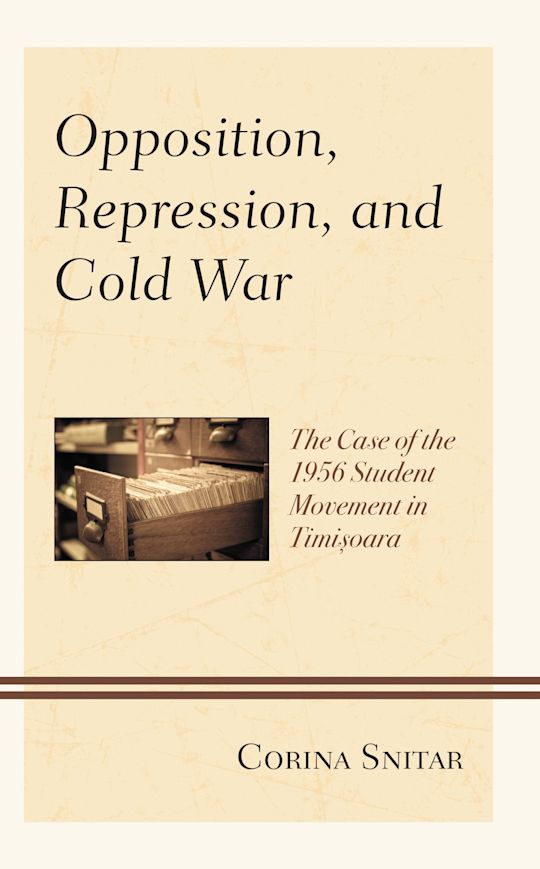- Home
- ACADEMIC
- History
- European History
- Opposition, Repression, and Cold War
Opposition, Repression, and Cold War
The Case of the 1956 Student Movement in Timisoara
Opposition, Repression, and Cold War
The Case of the 1956 Student Movement in Timisoara
This product is usually dispatched within 1 week
- Delivery and returns info
-
Free US delivery on orders $35 or over
You must sign in to add this item to your wishlist. Please sign in or create an account
Description
Corina Snitar examines the student protests in Timisoara in 1956 following the Hungarian uprising of the same year. Snitar analyzes the students’ demands regarding Soviet occupation, the situation in Hungary, and insufficient student accommodations. This book shows how the Hungarian revolt was the catalyst for opposition during a time of social duress. Snitar examines the methods of repression against real and imaginary opposition to the Communist rule and shows how the fates of students were tied to the political goals of the Romanian leadership.
Table of Contents
Chapter 2. The Trajectory of the Protest
Chapter 3. Crushing the Opposition
Chapter 4. In the Aftermath of the Protest
Product details
| Published | Mar 01 2021 |
|---|---|
| Format | Hardback |
| Edition | 1st |
| Extent | 226 |
| ISBN | 9781793641595 |
| Imprint | Lexington Books |
| Dimensions | 10 x 6 inches |
| Series | The Harvard Cold War Studies Book Series |
| Publisher | Bloomsbury Publishing |
About the contributors
Reviews
-
Corina Snitar’s study of the student disturbances in Romania in 1956 makes a much-welcomed contribution to the English-language scholarship on this turbulent year in European politics and the Cold War. The meticulous source base for this book includes the detailed archival records relating to the protests and oral testimonies of those who took part in them. This important book reveals the extent of state-sponsored repression in Romania and the fates of those who were active in the resistance movement.
Melanie Ilic, University of Gloucestershire
-
It was not only in Hungary and Poland that people protested against communist rule in 1956. In Romania too, especially in Timisoara where there was access to the Hungarian media, students made their voices heard. Corina Snitar’s case study of that student protest is not only the most detailed account so far of these little-known events, but offers important insights into the nature of protest in early communist Eastern Europe, the mechanisms used to repress that protest, and the specifically Romanian twist of the leadership’s response which paved the way for the emergence of the Ceausescu regime.
Geoffrey Swain, professor emeritus, University of Glasgow
-
Opposition, Repression, and Cold War: The Case of the 1956 Student Movement in Timisoara is proof that protests that take place in the shadow of more eye-catching mobilizations are vital to understanding the course of political opposition. Corina Snitar’s very careful excavation of the motivations and actions of that group of students who organized the meeting at the Polytechnic Institute of Timisoara in October of 1956 is profoundly moving. Corina Snitar handles the story of these students protest with nuance, objectivity, honesty, and above all, empathy.
Judith Pallot, professor emerita, University of Oxford and Christ Church

ONLINE RESOURCES
Bloomsbury Collections
This book is available on Bloomsbury Collections where your library has access.


































